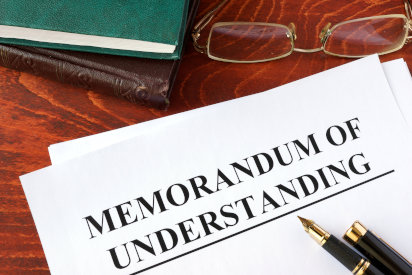In an increasingly connected world, many problems that arise affect the interests of multiple countries. Effective solutions can only be achieved through proactive international cooperation.
Due to the varying scope of a range of cross-border issues, from security and defence to the environment and technological exchanges, various international legal instruments are available to support international cooperation.
Trying to understand the difference between the various instruments available can be a stressful process. But don’t worry.
This article spells out the key differences between two of the most common instruments: treaties and memoranda of understanding, as outlined by the Australian government.
What is a treaty?
A treaty is an agreement between countries which is binding at international law.
Treaties can be bi-lateral (between two countries) or multi-lateral (between three or more countries). In some cases, international organisations can be party to treaties.
A treaty may also be called a “convention”, “protocol”, “covenant” or “exchange of letters”.
What is a memorandum of understanding?
A memorandum of understanding (MOU) embodies a political commitment between two or more parties, indicating that they have reached an understanding and broadly outlining what has been agreed upon. While not legally enforceable, MOUs help to regulate the exchange of information and cooperation between the parties.
An MOU is referred to as an instrument of “less-than-treaty status” and is the most common example of this type of instrument. Other forms include arrangements, exchanges of notes, letters recording understandings, records of discussion and joint communiqués.
What is the difference between a treaty and MOU?
As outlined above, the key difference is that treaties are legally enforceable while MOUs are not.
As it is not binding under international law, an MOU is not subject to Australia’s treaty-making process.
Commonwealth Government agencies wishing to enter into such an instrument with a foreign government are responsible for drafting and negotiating the text, in consultation with the Department on Foreign Affairs and Trade (DFAT).
MOUs are less formal than treaties, and this is reflected in the language and key provisions used.
Language
Less-than-treaty status instruments such as MOUs use non-mandatory language.
For example, treaties will use terms such as “agreement”, “agree” and “agreed”, while MOUs will use terms such as “arrangement”, “decide” and “jointly determine”.
Key provisions
MOUs avoid formal preambles, instead using informal opening recitals.
Subdivisions of an MOU should be referred to as paragraphs rather than articles, and the instrument will “come into effect” rather than “enter into force”.
While treaties may use formal arbitration to settle disputes, an MOU will use terms such as amicable or peaceful resolution.
How does an MOU “come into effect”?
MOUs will be reviewed by DFAT for clearance prior to signature.
This involves ensuring the proposed instrument contains no treaty language or anything that would imply the instrument is binding at international law.
Key takeaways
Treaties and Memoranda of Understanding (MOUs) are both used to address cross-border issues by facilitating international cooperation.
MOUs are not legally enforceable like treaties, and they are also less formal. This is reflected in the language and key provisions used.



